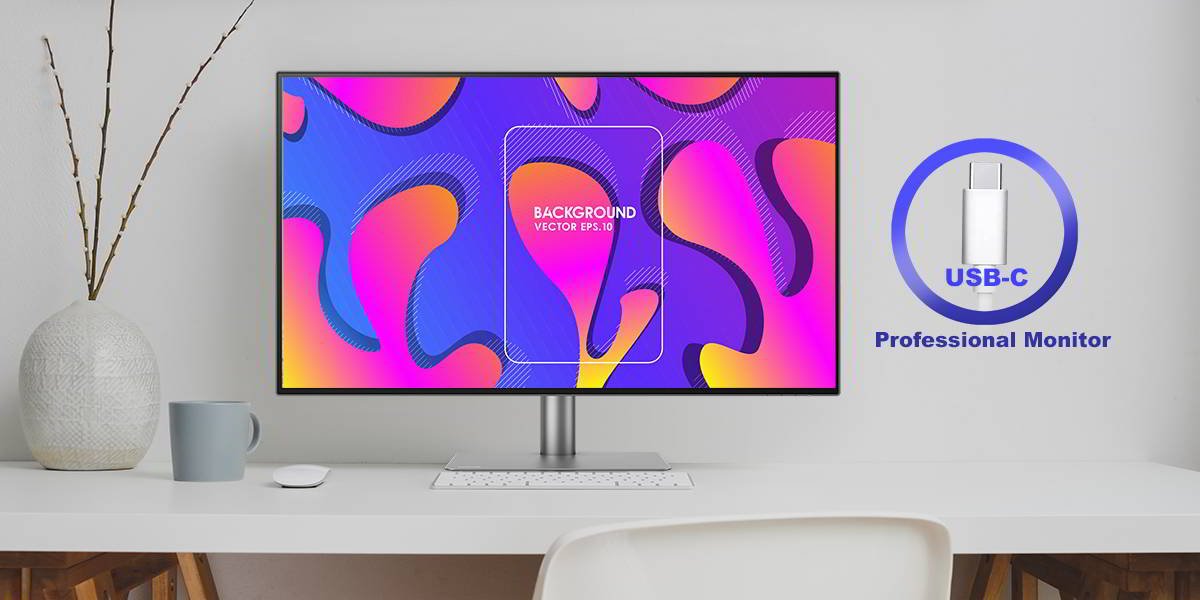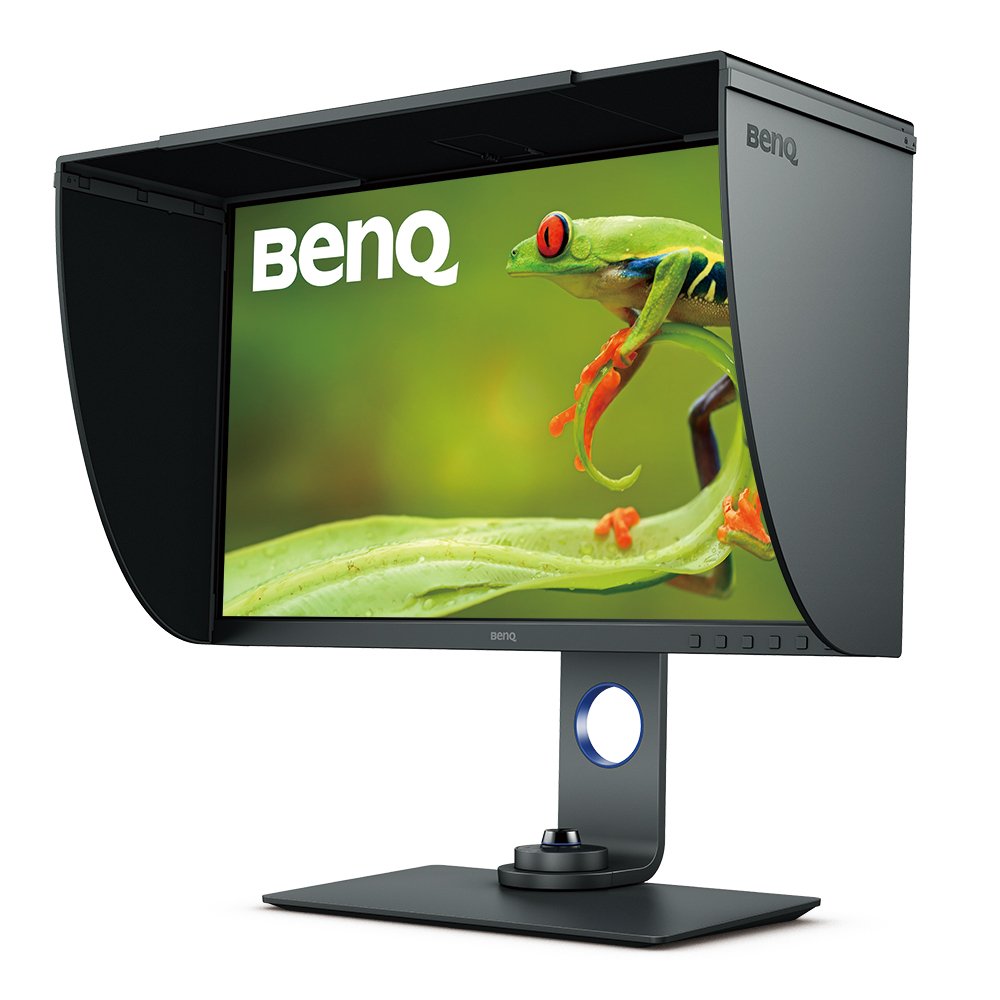


By now, the USB-C connections are found in almost all type of electronic devices. At first associated mostly with Mac laptops, today this USB connection is found in laptops of all ranges as well as cell phones, power banks, gaming devices, and peripherals. Monitors don’t escape the list of peripherals that have been adopting this convenient and modern connectivity standard but not just as a way of transporting data or power between devices, but video and audio signals as well.
A USB-C monitor takes advantage of everything that makes USB-C great, namely the slim profile and reversible connector, the high-speed data transfers, and the multitude of protocols it can carry. And, to accomplish its main function, it uses the DisplayPort Alt mode included in the USB-C specification. This means that a traditional DisplayPort video and audio signal can be carried over the modern USB-C connection, leaving enough bandwidth for other functions.
If you are looking for a new monitor that can take full advantage of that USB-C port on your device, these are the most important things any USB-C monitor has to have.
Perhaps the most noticeable advantage of using a USB-C monitor is the simplicity of not having to deal with multiple cables or adapters. USB-C connectivity on a monitor allows you to directly plug your laptop to a monitor without the need to spend extra money and carry bulky adapters around. Not using additional adapters also avoids the delay added to your video signal; as you might already know, input lag is one of the biggest enemies of an enjoyable monitor experience. The video signal in a USB-C cable is actually DisplayPort, therefore any USB-C to HDMI adapter will have to do some degree of signal processing, potentially degrading the video quality. Think about it, you definitely didn’t buy that beautiful 4K monitor only to have subpar video quality due to unnecessary adapters. A simple connection has the advantage of less things to carry around and a better signal with all of its quality untouched.
Another common problem of using adapters is that they tend to break. Carrying an adapter with you for whenever you might need it certainly puts a lot of stress on those delicate connections and cables. Nothing is worse than pulling out your adapter the moment you need it only to realize it doesn’t work anymore. Sometimes running to the store to buy a new one or waiting a few days to get one in the mail are simply not an option. A USB-C cable is as simple and inexpensive as any other cable that you have lying around, meaning that unless you seriously abuse it, it won’t break.
In addition to the simplicity of the USB-C cable, we can mention its surprising versatility. Never before had a cable so simple and inexpensive been able to do so many things at once. A single USB-C cable can carry DisplayPort video signals up to 8K at 60Hz, digital audio signals, ultra-fast data over USB 3.1, as well as up to 100 watts of power to charge or operate your devices (more on that later). What this means for your monitor is that it can easily integrate USB hubs, memory card readers, webcams and any other USB devices that you can think of without the need for additional cables running from your monitor to your computer.
The second biggest advantage a USB-C monitor can offer is the option to deliver up to 100 watts of power to your device via the Power Delivery specification. This USB Power Delivery specification means that you can leave the power brick of your laptop in your backpack or at home, because the same cable that delivers the video from your laptop to the monitor will be providing enough juice to keep your laptop powered and charged. This is an optional function that not all USB-C monitors implement, so be sure to read the specs carefully to get one that fits your needs.
When comparing USB-C monitor, you will find the rated power output expressed in watts. A typical laptop will require anywhere from 40 to 60 watts, for light to medium intensity usage. Even more power-hungry laptops that require up to 85 watts of power will do just fine on 60 watts as long as you’re not doing energy intensive tasks like video encoding or 3D graphics rendering all the time (Your laptop will fallback on battery power for those energy demands peaks). Our recommendation is to always look for a USB-C monitor with USB Power Delivery, unless you don’t intend to use it with a laptop or other mobile devices.

Not that many years ago, it was easy to find yourself drowning in cables when working at your desk. Almost every laptop had its own type of charger, mobile phones too, USB for your mouse and keyboard, FireWire or eSATA for high speed data transfers, HDMI or DisplayPort for video, VGA and DVI as well. Even more recent standards like Thunderbolt 1 and 2 meant one more type of cable you had to have stashed in some drawer. You get the picture; a mess of tangled cables is something we have all dealt with. With USB-C those days are gone.
Today, USB-C not only brings all those standards together under one cable, but also to every type of device. Mobile phones have been quick to adopt USB-C ports for charging, on higher end models, these same USB-C ports also output DisplayPort signals. With such a phone, having a USB-C monitor also gives you a quick way to display content from your phone on a bigger screen. And as we move forward, the number of devices sporting USB-C ports for charging, data or video only keeps increasing.
As a last word of caution, always remember to check the specs. When dealing with USB-C, it becomes even more important to carefully check the specs of cables and devices. First of all, not all USB-C cables are the same. Some cables with USB-C connectors are only USB 2.0 compliant, which means they only provide limited speed data transfers and no video support. USB-C 3.1 cables that support video and high-speed data also come in Gen 1 and Gen 2 varieties with different bandwidth characteristics. And some cables with USB-C plugs might not even be USB at all, but Thunderbolt 3, which are compatible with USB 3.1.
Secondly, a device that sports a USB-C connector might not have all its functions enabled. For example, some laptops and mobile devices have USB-C only for charging, while others output video signals. Not all USB-C chargers provide Power Delivery, and even if it does, a phone charger will most likely not be enough to charge a laptop. In any case, the user’s manual will be your best resource. Remember that USB-C is just the connection type, not a standard, so always read the fine print carefully.
{{title}}
We will notify you when we have more.
We will send you an email once the product become available.Your email will not be shared with anyone else.
Sorry, our store is currently down for maintenance.We should be back shortly. Thank you for your patience!